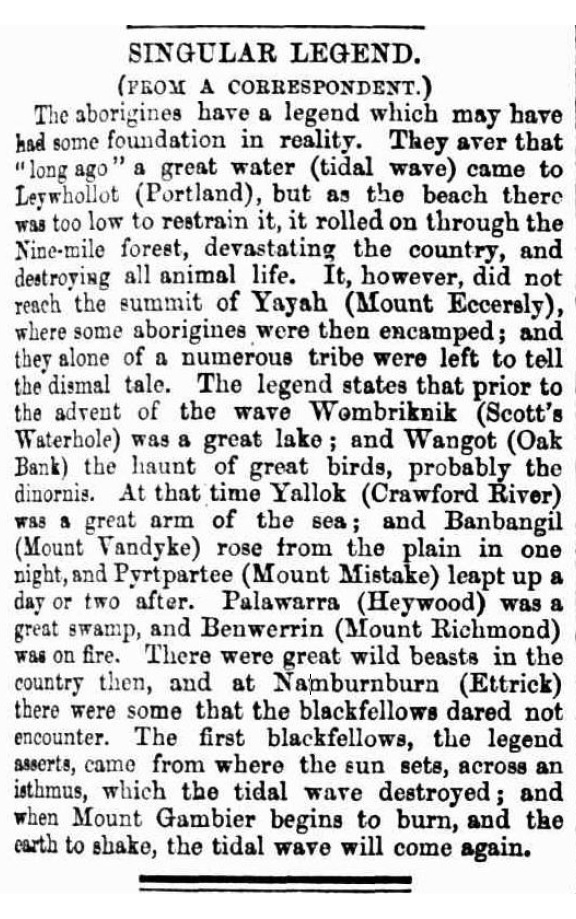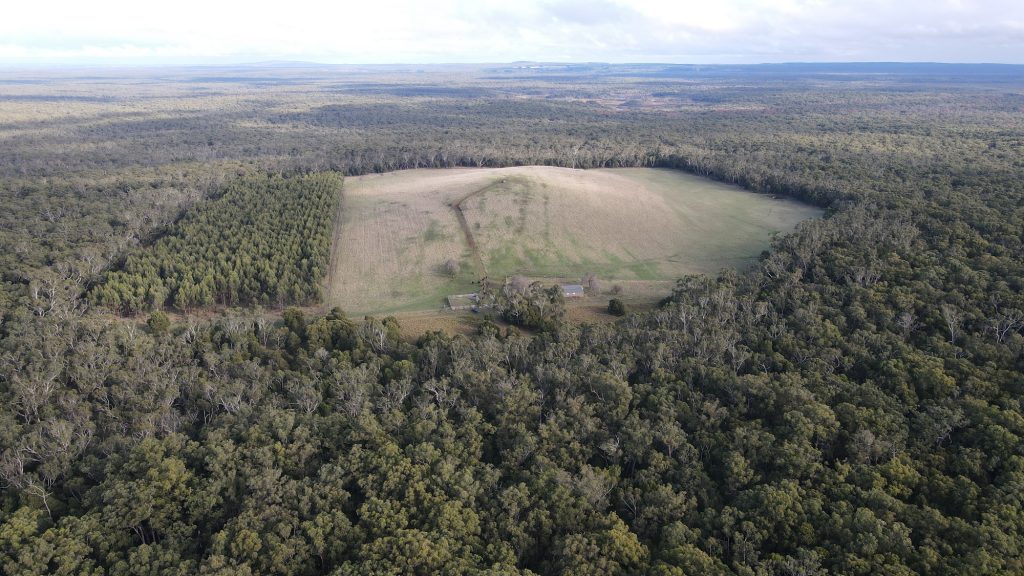Long before Mt Vandyke, it was known as Banbangil. What else can cultural knowledge teach us about environmental history?
I have been pondering this question again lately, as I continue to come across interesting references in my travels, and the answer is – a lot!
If you stop just for a moment and consider the sheer amount of time and number of generations that First Nations people have been present on this continent, and combine this with our modern scientific knowledge from the palaeontological record, you come to understand very quickly that people have witnessed an incredibly wide range of environmental change in Australia. Sea level rise, climate change, volcanic eruptions and the extinction of species – people were witness to it all.
In listening to and learning about Aboriginal cultures whose knowledge systems depend so much on the gathering and passing down of environmental information, I always have a bit of a ‘spine-tingling’ moment when I come across some of the oral traditions that have been recorded about the places I am familiar with – especially when they seamlessly link the present landscape to past events and delve into deep time.
It is a stark reminder of the length of Australia’s pre-European colonisation history – and the fact that people have been present here for a very long time. Modern Australians are incredibly privileged to be able to learn about this history from our First Nations people.
There are many examples that I could share, but I will just share a couple.
The first is this article from The Conversation where some Boandik traditional stories help to shed light on the recent volcanic history of the cross-border zone around Mt Gambier – where Australia’s most recent eruptions occurred.

The second, is an amazing account from 1870 I came across in my search for an accurate traditional name for Mt Vandyke, NGT’s newest reserve and our latest restoration project site. Please take the time to read it carefully…

Not only does this record the traditional name of Mt Vandyke as Banbangil – the only reference I have so far come across – but it tells of a wide range of significant events in the deep past. Earthquakes, tidal waves, volcanic eruptions, fires, loss of life, megafauna and species extinctions. (By the way, for some interesting reading about Australia’s ‘great birds’ of the past this article, which shows how our knowledge continues to evolve, may be of interest.)
The final sentence, a warning for the future, is clearly underpinned by a vast, accumulated understanding of environmental history. It is worth reflecting on the fact that this traditional knowledge has survived many times longer than the very earliest books still known to exist.
And while my interest is often about ecology – this story is about so much more!
I encourage you to learn from our First Nations people and the traditional knowledge that has been passed down and recorded. It will enrich your understanding of the place you now call home.

